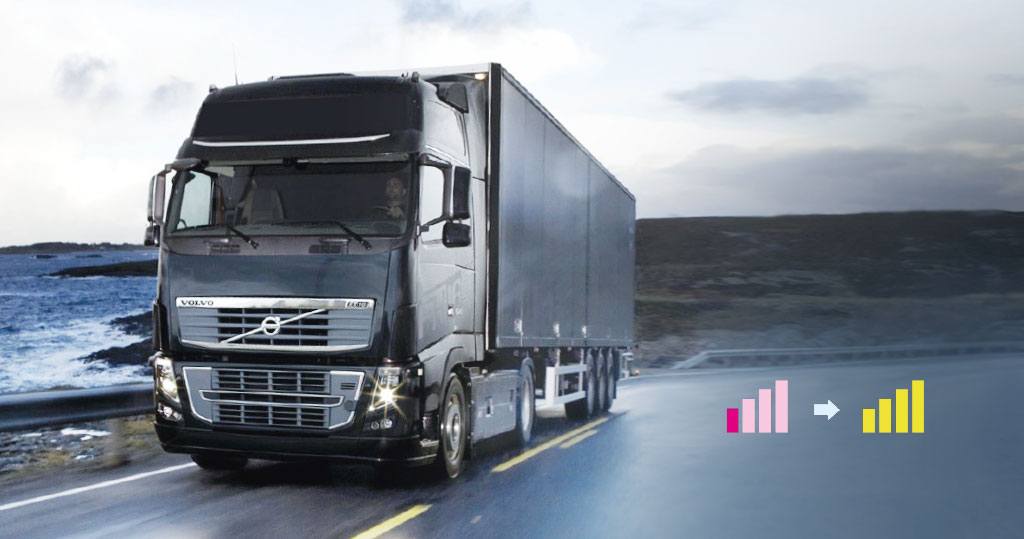Businesses requiring network connectivity for fleet management, asset tracking, and other M2M uses generally have two options – multi IMSI and eUICC. These two technologies are both powerful network switching solutions, but have distinct differences related to how they operate and the specific use cases that stand to benefit the most from their deployment. With the increasing popularity of connected enterprise solutions as businesses capitalise on IoT, having a smart network solution provides greater performance, reliability, and flexibility.
With 90 million companies worldwide leveraging IoT asset tracking in 2020 according to Juniper Research – the business value and interest in these solutions is clear. Add to this, smart cities, metering, agriculture, retail, banking, security and other remote telematic solutions – it is apparent there is huge potential for businesses to be more connected than ever before. By exploring the features and functionality offered by both multi IMSI and eUICC, businesses can determine which solution is best for them.
Is universal connectivity through eUICC within reach?
For a variety of industry uses, eSIM’s promise of universal connectivity through an unlimited choice of networks on its eUICC presents an attractive option. The connectivity of eUICC devices is capable of being programmed post-deployment over-the-air and Juniper Research expects many to take advantage of this with M2M cellular connections using eSIM to grow by 350% within the space of just five years, reaching over one billion by 2024.
Global M2M eSIM devices split by vertical
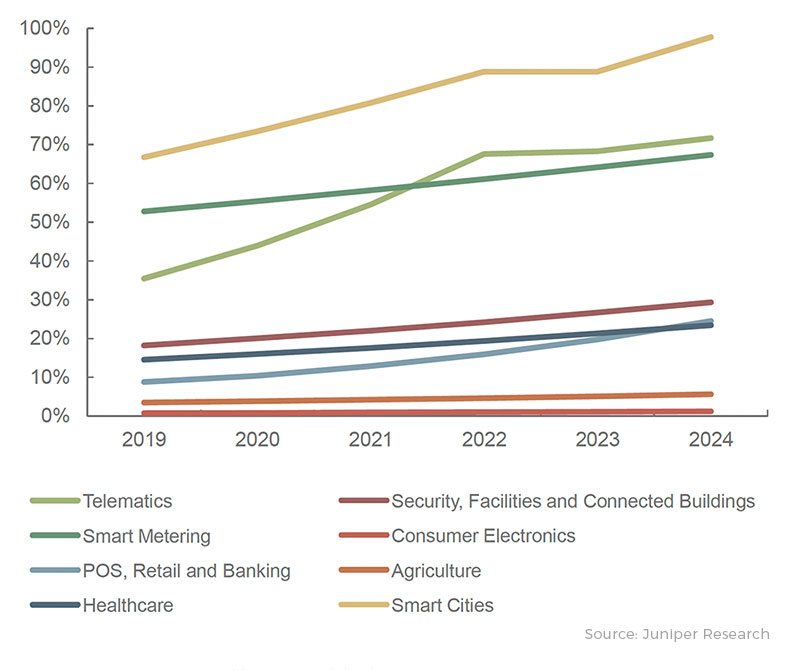
Whether this solution is ideal depends largely on the application – eUICC offers end-users control over their connectivity and unlimited options in-the-field. Although this offers valuable connectivity capabilities, eUICC does have drawbacks for organisational use. Costs are generally high, coinciding with expensive and complex deployment cycles. Many MNOs have yet to fully adopt eSIM and remote SIM provisioning due to the relative low number of active devices, expense and complexities with implementation such as local data residency requirements in some countries.
Limited commercialisation means that eUICC is also not quite ready for the degree of standardisation many companies are looking for. Multi IMSI can be implemented in weeks at a lower cost, while eUICC implementations can take several months and require more expensive CapEx investment.
Multi IMSI vs eSIM (eUICC)
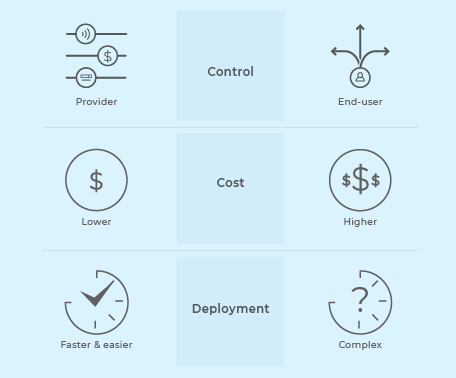
Why multi IMSI is an alternative to eUICC
While eUICC technologies offer great promise, it is a new development and as such has limitations on its value for companies needing a solution that can be used today. For instance, the set up and onboarding process for eUICC is not fully developed yet. In the long term, eUICC has great potential but is not entirely ready to implement just yet.
With greater provider control as a result of being able to define network options upfront, reduced capital expenditure investment, and some of the flexibility offered by eUICC, multi IMSI offers organisations an opportunity to leverage multi-network capabilities while also avoiding some of eUICC’s limitations as it continues to develop.
Multi IMSI works by using a SIM applet to manage multiple network profiles. These IMSI profiles provide network redundancy that can be switched on when moving across territories or in network dead spots, providing in-transit fleets with reliable mobile connectivity. Generally, multi IMSI is more cost-effective than eUICC and can be implemented off-the-shelf to quickly enable network access.
Benefits of multi IMSI
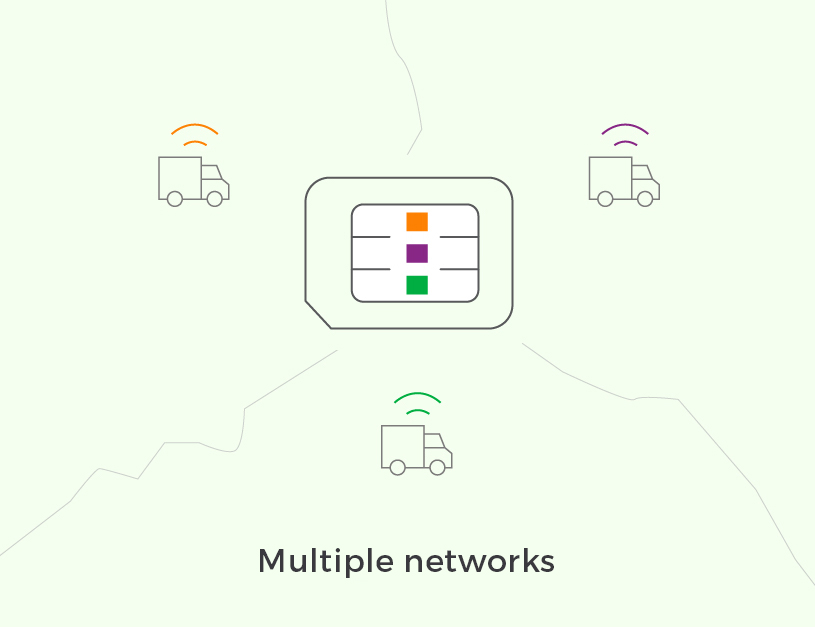
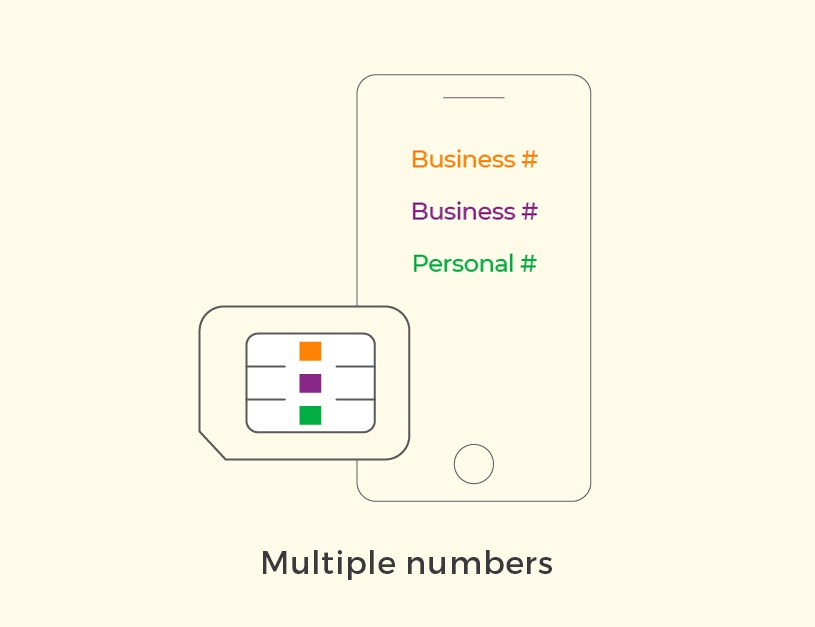
Use cases for multi IMSI
“A key differentiator for IoT managed service providers is the ability to aggregate multiple wireless wide area networks and thus provide superior area coverage, multi-domestic footprints and multi-technology connectivity on a single platform.”
Fredrik Stålbrand, Berg Insight
Multi IMSI from Workz
Multi IMSI allows enterprises to quickly and cost-efficiently adopt mobile connectivity as a cornerstone of their business operations. For network operators and services providers, it guarantees a longer term ownership of the customer which in turn encourages greater investment in the relationship and quality of service. With over a decade of M2M enterprise experience deploying multi-IMSI and eSIM solutions in five continents, Workz has the expertise necessary to help you leverage multi IMSI and eUICC.
To understand which technology will work best for your business,
get in touch with a Workz consultant today.
